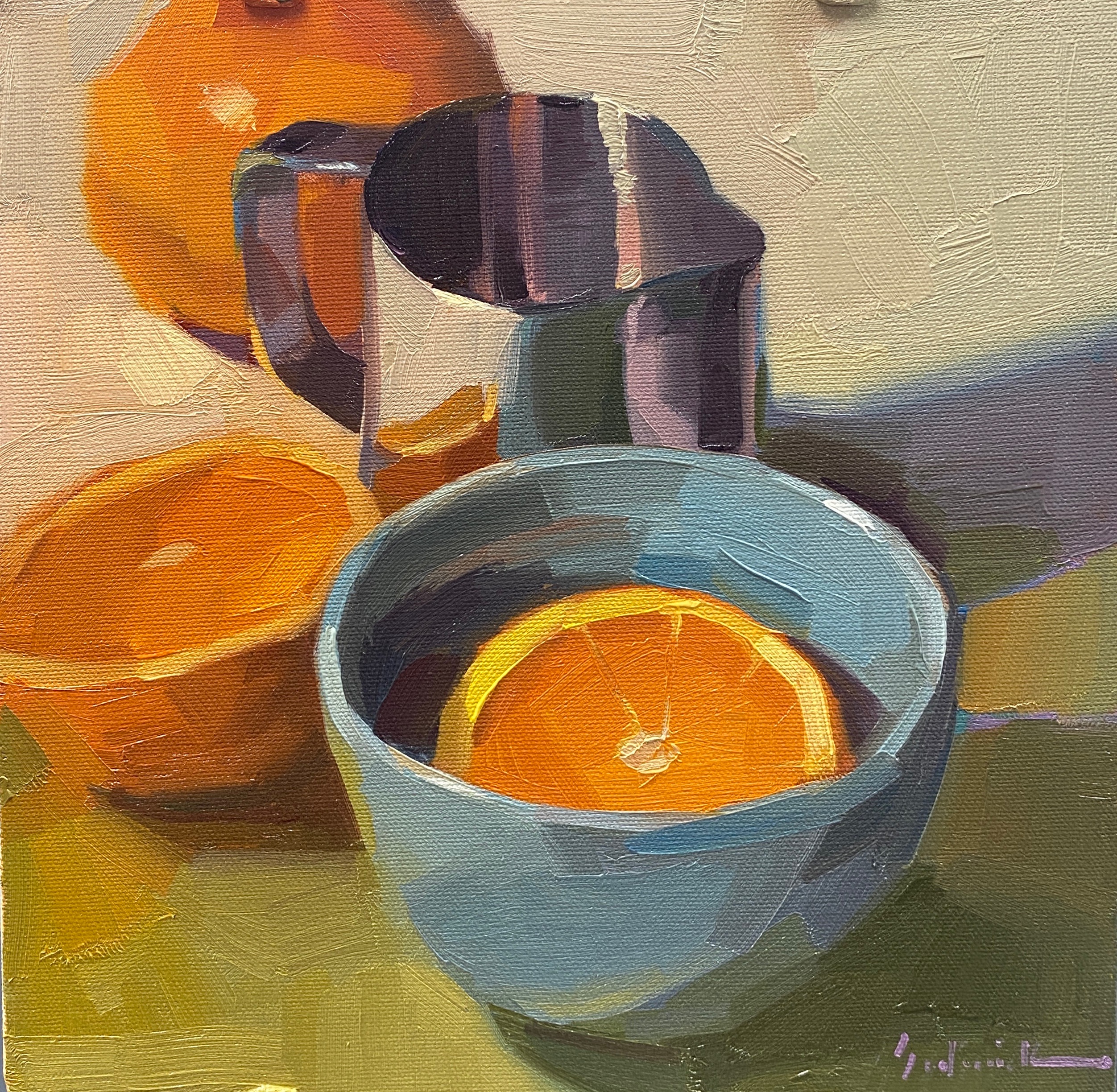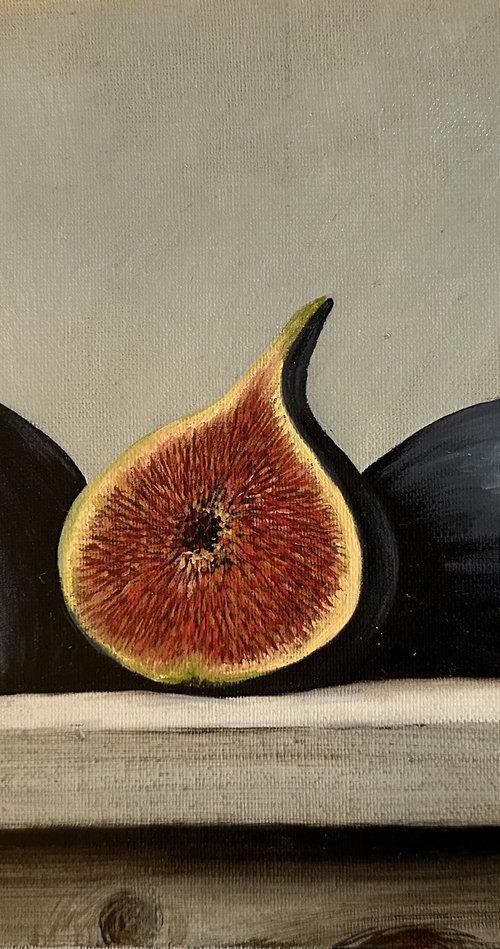Oil Paintings for Sale to Elevate Any Room
Oil Paintings for Sale to Elevate Any Room
Blog Article
Checking out All Regarding Oil Paints: A Guide to Understanding Their Beauty and Worth
Oil paints have actually captivated target markets for centuries, supplying a look into the creative mastery of various eras. Their abundant background is intertwined with ingenious techniques and profound psychological expression. Comprehending the products and methods behind these art work can enhance admiration. Additionally, the market for oil paintings offers opportunities for enthusiasts and investors alike. As one explores this interesting globe, the question occurs: what makes an oil paint absolutely beneficial?
The History of Oil Paint: A Trip Via Time
Oil paint has roots that date back to ancient times, it absolutely grew throughout the Renaissance, when artists discovered its flexibility and abundant shade potential. Early examples can be traced to the 7th century, with techniques evolving notably across societies. The tool became famous in Northern Europe in the 15th century, specifically via the works of artists like Jan van Eyck, that spearheaded its use for in-depth realistic look and dynamic hues. This duration marked a separation from tempera paints, enabling higher deepness and appearance. As oil painting spread, it influenced plenty of musicians, leading to masterpieces by renowned figures such as Leonardo da Vinci and Rembrandt. The tool's heritage continues, forming the art world well into modern times.
Recognizing Oil Paints: Materials and Techniques
As musicians discover the globe of oil paints, they experience a diverse range of products and techniques that define this medium. The main components of oil paint consist of pigments, which supply color, and drying oils, such as linseed, that bind the pigments and help with application. Various additives can change the paint's appearance and drying time, boosting adaptability. Methods like glazing, where clear layers are built up, and impasto, which includes applying thick paint, enable various visual results. Furthermore, the use of brushes, combination knives, and even fingers can produce one-of-a-kind textures and coatings. Understanding these strategies and materials enables musicians to totally express their creative thinking and attain the preferred effect in their art work.
The Function of Shade in Oil Paintings
Shade plays an essential function in oil paintings, affecting both visual allure and psychological resonance. Recognizing shade concept basics, including the connections in between shades, can boost a musician's capacity to convey state of mind and ambience. Additionally, mastering color blending techniques enables better deepness and splendor in a paint's palette.

Color Theory Basics
Recognizing shade concept is essential for musicians dealing with oil paints, as it forms the structure for producing visually engaging and unified structures. Shade concept incorporates the study of exactly how shades communicate, the shade wheel, and the relationships between main, secondary, and tertiary shades. Artists use corresponding colors to enhance contrasts and develop focal points, while analogous colors advertise unity and cohesiveness within an item. Additionally, the principles of warm and amazing shades affect the understanding of depth and room in a painting. Understanding these principles allows musicians to control color efficiently, leading the visitor's eye and connecting their intended message. Mastery of color theory eventually enriches a musician's ability to share feelings and ideas via their work.
Emotional Influence of Color
The emotional effect of color in oil paints plays a critical function in exactly how visitors view and connect with art work. Shades stimulate certain sensations and moods, affecting the viewer's mood. Warm hues like reds and oranges can produce a feeling of heat and power, while cool tones such as blues and eco-friendlies frequently stimulate peace or self-questioning. Artists strategically select color palettes to boost narrative components, guiding the audience's emotional journey. The saturation and comparison of colors even more intensify these effects, drawing focus and creating focus. Eventually, the interplay of shades in oil paintings not just improves their aesthetic charm however likewise serves as an effective tool for psychological expression, enhancing the audience's experience and analysis.
Shade Combining Techniques
While numerous elements of oil painting add to the total make-up, grasping shade mixing techniques is crucial for accomplishing wanted effects and deepness. Shade blending can be come close to via different techniques, consisting of the additive and subtractive procedures. Additive blending entails integrating shades of light, while subtractive mixing counts on pigments, where shades mix to develop brand-new tones. Artists typically use a restricted combination to produce harmonious jobs, comprehending the relationships in between main, second, and tertiary colors. Techniques such as glazing and scumbling even more boost depth and luminance. By skillfully mixing shades, an artist can evoke feelings, create centerpieces, and attain a sense of realism, eventually boosting the paint's psychological and aesthetic effect.
Famous Oil Painters and Their Iconic Functions

Famous for their proficiency of color and method, oil painters have developed some of the most renowned artworks in background. Popular artists like Vincent van Gogh captivated audiences with his stirring brushwork in "Starry Night," while Claude Monet's "Perception, Daybreak" prepared for Impressionism. Leonardo da Vinci's "Mona Lisa" continues to be an enduring icon of creative wizard, showcasing his skill in catching human expression. Rembrandt's "The Night Watch" highlights his ingenious use of light and shadow. Other remarkable numbers consist of Pablo Picasso, who reinvented modern-day art with his vibrant experimentation in jobs like "Les Demoiselles d'Avignon," and Georgia O'Keeffe, whose vivid representations of landscapes and flowers assisted specify American innovation. Each artist's unique design added greatly to the oil paint landscape.
How to Assess the High Quality of an Oil Painting
Examining the high quality of an oil painting involves a cautious evaluation of workmanship strategies, in addition to an analysis of color and composition. Observing brushwork, layering, and the application of paint can disclose the musician's ability level. Additionally, the interaction of colors and the overall setup of aspects contribute substantially to the paint's aesthetic worth.
Examining Workmanship Techniques
A careful analysis of craftsmanship strategies is necessary for determining the quality of an oil paint. Evaluators ought to first analyze the application of paint; thick, textured brushstrokes may suggest a knowledgeable hand, while extremely uniform applications could show an absence of deepness. oil paintings for sale. The layering method is additionally essential; the visibility of lusters and differed thickness can boost luminance and complexity. In addition, the quality of the materials used, such as the canvas and pigments, plays a significant duty in durability and general aesthetic. Interest to detail in elements like edges and shifts in between shades shows the musician's dedication to their craft. Inevitably, these techniques contribute to the painting's psychological influence and market price, acting as signs of the artist's ability and intent
Evaluating Shade and Make-up
While assessing the top quality of an oil paint, one must concentrate on the interplay of color and structure, as these aspects are essential to the artwork's overall effect. Color selections can evoke feelings and develop state of mind; for that reason, the musician's scheme ought to be taken a look at for harmony and contrast. A well-balanced make-up directs the visitor's eye and creates a feeling of unity. Artists commonly employ methods like the policy of thirds or leading lines to enhance aesthetic passion. Additionally, using light and shadow can include deepness, improving the three-dimensionality of the painting. Inevitably, a successful oil paint weds shade and structure, engaging the audience and welcoming a much deeper admiration of the musician's vision and strategy.
Caring for and Preserving Oil Paintings
Proper care and conservation of oil paints is essential for maintaining their honesty and durability. To protect these artworks, it is crucial to present them far from direct sunshine, which can check here create fading and staining. Preserving a secure environment with controlled temperature and humidity additional aids in avoiding damage. Cleansing need to be done delicately making use of a soft, completely dry fabric, preventing any severe chemicals that might damage the paint or varnish. Routine assessments for indications of damage, such as fracturing or flaking, are recommended. When keeping or moving oil paints, correct cushioning and framework are essential to stay clear of physical injury. Eventually, thorough care adds to the visual charm and value of oil paints with time.
The Market for Oil Paintings: Gathering and Spending
Comprehending the marketplace dynamics for oil paints is important for financiers and collection agencies alike. The worth of these art work is influenced by numerous factors, including the musician's credibility, historic value, and present patterns. Collection agencies frequently look for items that reverberate directly while taking into consideration possible gratitude in worth. Public auctions and galleries work as primary places for buying and selling, with costs varying based upon demand and rarity. Buying oil paintings calls for study right into the market, in addition to an understanding of authenticity and provenance. Additionally, arising musicians might supply possibilities for considerable returns, while established names can command high costs. Generally, a tactical method to gathering can generate both aesthetic satisfaction and economic rewards.

Regularly Asked Concerns
What Are the Environmental Impacts of Oil Paint Products?
The ecological effects of oil paint products include the launch of volatile natural compounds (VOCs), damaging waste generation, and source extraction for pigments. These factors contribute to air pollution and eco-friendly destruction, raising worries among environmentally aware artists and consumers.
Just How Do Various Canvases Influence Oil Paint Outcomes?
Various canvases affect oil paint results significantly. Appearance, surface area, and absorbency high quality can alter paint application, drying times, and shade vibrancy. Musicians usually select certain canvases to accomplish preferred effects and enhance their imaginative expression.
Can Oil Paintings Be Brought Back if Damaged?
Oil paintings can certainly be brought back if damaged. Expert conservators make use of numerous methods to fix tears, clean surfaces, and address staining, ensuring that the artwork preserves its original elegance and worth for future generations.
What Are the Indicators of an Initial Oil Paint?
The indicators of an original oil painting consist of noticeable brush strokes, appearance variants, and an irregular canvas weave (oil paintings for sale). Additionally, credibility might be verified through provenance, trademarks, and the visibility of a varnish layer distinct to oil tools
Exactly How Has Technology Influenced Modern Oil Paint Techniques?
Modern technology has actually substantially affected contemporary oil painting techniques by introducing digital devices for preparation, boosted materials for structure and long life, and on-line systems for offering and sharing art, therefore broadening artists' innovative opportunities and target market reach. Oil paint has roots that date back to ancient times, it truly grew throughout the Renaissance, when artists discovered its versatility and abundant shade capacity. The psychological effect of color in oil paints plays an important function in how audiences link and view with art work. While lots of elements of oil paint add to the general make-up, mastering shade blending strategies is crucial for attaining preferred effects and deepness. Examining the quality of an oil painting involves a cautious assessment of workmanship methods, as well as an evaluation of color and composition. While examining the quality of an oil painting, one have to focus on the interaction of color and make-up, as these components are essential to the artwork's total influence.
Report this page